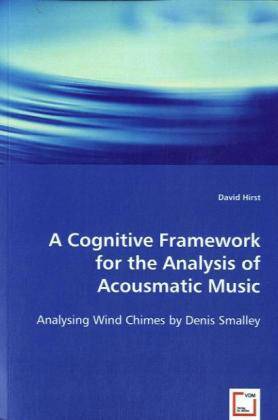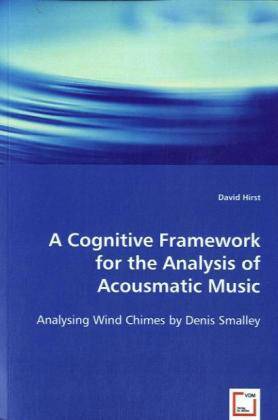
Door een staking bij bpost kan je online bestelling op dit moment iets langer onderweg zijn dan voorzien. Dringend iets nodig? Onze winkels ontvangen jou met open armen!
- Afhalen na 1 uur in een winkel met voorraad
- Gratis thuislevering in België vanaf € 30
- Ruim aanbod met 7 miljoen producten
Door een staking bij bpost kan je online bestelling op dit moment iets langer onderweg zijn dan voorzien. Dringend iets nodig? Onze winkels ontvangen jou met open armen!
- Afhalen na 1 uur in een winkel met voorraad
- Gratis thuislevering in België vanaf € 30
- Ruim aanbod met 7 miljoen producten
Zoeken
A Cognitive Framework for the Analysis of Acousmatic Music
Analysing Wind Chimes by Denis Smalley
David Hirst
Paperback | Engels
€ 77,95
+ 155 punten
Omschrijving
The analysis of acousmatic music has traditionally been very difficult since there is no score to freeze the music in time. Analysis relies heavily on the act of concentrated listening. Since aural perception is so crucial to the analysis of acousmatic music, this book poses the questions: Can a framework for the analysis of acousmatic music be derived from cognition theories, research on the auditory perception of everyday environmental sounds, and studies into the perception of Western tonal music? If so, what are the frameworks attributes? From experimental data documented in the relevant literature, this book draws together the constituents of a cognitive framework called the Segregation, Integration, Assimilation and Meaning (SIAM) framework for the analysis of acousmatic music. The book reports on the practical application of the SIAM framework through a detailed analysis of the work Wind Chimes, by Denis Smalley. This analytical methodology should be especially useful to auditory cognition professionals, researchers interested in musical analysis of non-notated music, and composers seeking to gain more insight into musical structures in electroacoustic music in general.
Specificaties
Betrokkenen
- Auteur(s):
- Uitgeverij:
Inhoud
- Aantal bladzijden:
- 248
- Taal:
- Engels
Eigenschappen
- Productcode (EAN):
- 9783639038736
- Verschijningsdatum:
- 4/06/2008
- Uitvoering:
- Paperback
- Formaat:
- Trade paperback (VS)
- Afmetingen:
- 152 mm x 229 mm
- Gewicht:
- 335 g

Alleen bij Standaard Boekhandel
+ 155 punten op je klantenkaart van Standaard Boekhandel
Beoordelingen
We publiceren alleen reviews die voldoen aan de voorwaarden voor reviews. Bekijk onze voorwaarden voor reviews.











